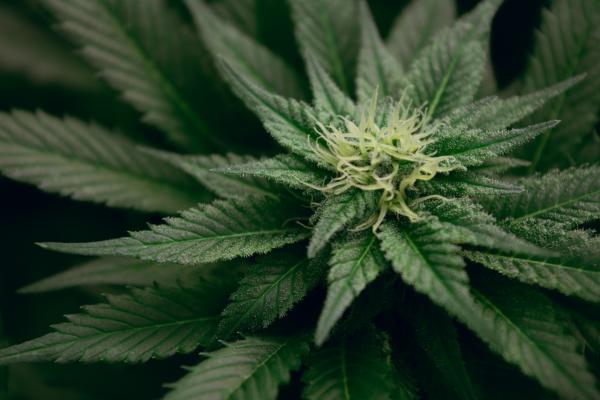Not so sweet! Candy makers are hit by a sugar shortage ahead of the holiday season
Not everything is sweet for makers of candy canes, peanut crisps and lollipops.
What happened: Confectionery companies are facing higher costs and, in several cases, reduced production of sweets due to a limited supply of sugar, The Wall Street Journal reported.
Candy producers blame the problem on U.S. agricultural policy requiring that at least 85% of U.S. sugar purchases come from domestic processors. This requirement has resulted in limited supplies and high prices during times of high demand.
On the other hand, sugar producers and processors claim that this policy has guaranteed sufficient supplies and protects farmers' livelihoods. They argue that U.S. sugar producers compete with foreign competitors who offer subsidized sugar at artificially low prices.
In May, U.S. raw cane sugar prices jumped to 42.56 cents per pound, the highest level since January 2011, the U.S. Department of Agriculture (USDA) reported. Meanwhile, The Wall Street Journal reported that refined beet sugar in the Midwest rose to 62 cents per pound over the same period.
According to Rabobank, a major agricultural lender, refined beet sugar prices reached historic highs in 2022. This price spike is attributed to concerns over the failure of the United States and Mexico to meet export quotas. The USDA notes that Mexico is also grappling with record high sugar prices.
Also read: Hershey stock drop presents a great opportunity
In April, Hershey Co HSY and MONDELEZ INTERNATIONAL INC MDLZ, leading makers of popular candies and snacks like Reese's Peanut Butter Cups and Sour Patch Kids, acknowledged high sugar prices in their April earnings calls. Skyrocketing costs contributed to their overall increase in spending.
The USDA predicts that global supply shortages and weather issues will keep US sugar prices high. Rabobank pointed out that buyers have already started to reserve sugar in advance, which could keep prices high.
Photo: Shutterstock
According to the USDA, the overall sugar supply in the United States is expected to decrease by 2.3% for the next crop year.
The supply of sugar, especially beets, is proving difficult, as most of the 2023-2024 sugar beet crop has already been sold under early contracts. The USDA reported that beet sugar accounts for about 56% of US production, with the rest being cane sugar.
According to the Wall Street Journal, the National Confectioners Association, which represents more than 500 sugar user companies, brokers and suppliers, is currently advocating for changes to the sugar program. Christopher Gindlesperger, the group's senior vice president of public affairs, said the changes would increase supply during times of high demand.
Now Read: ZenEvo Sleepy Sweet Introduces New Packaging
Photo: Shutterstock
© 2023 Benzinga.com. Benzinga does not provide investment advice. All rights reserved.

Not everything is sweet for makers of candy canes, peanut crisps and lollipops.
What happened: Confectionery companies are facing higher costs and, in several cases, reduced production of sweets due to a limited supply of sugar, The Wall Street Journal reported.
Candy producers blame the problem on U.S. agricultural policy requiring that at least 85% of U.S. sugar purchases come from domestic processors. This requirement has resulted in limited supplies and high prices during times of high demand.
On the other hand, sugar producers and processors claim that this policy has guaranteed sufficient supplies and protects farmers' livelihoods. They argue that U.S. sugar producers compete with foreign competitors who offer subsidized sugar at artificially low prices.
In May, U.S. raw cane sugar prices jumped to 42.56 cents per pound, the highest level since January 2011, the U.S. Department of Agriculture (USDA) reported. Meanwhile, The Wall Street Journal reported that refined beet sugar in the Midwest rose to 62 cents per pound over the same period.
According to Rabobank, a major agricultural lender, refined beet sugar prices reached historic highs in 2022. This price spike is attributed to concerns over the failure of the United States and Mexico to meet export quotas. The USDA notes that Mexico is also grappling with record high sugar prices.
Also read: Hershey stock drop presents a great opportunity
In April, Hershey Co HSY and MONDELEZ INTERNATIONAL INC MDLZ, leading makers of popular candies and snacks like Reese's Peanut Butter Cups and Sour Patch Kids, acknowledged high sugar prices in their April earnings calls. Skyrocketing costs contributed to their overall increase in spending.
The USDA predicts that global supply shortages and weather issues will keep US sugar prices high. Rabobank pointed out that buyers have already started to reserve sugar in advance, which could keep prices high.
Photo: Shutterstock
According to the USDA, the overall sugar supply in the United States is expected to decrease by 2.3% for the next crop year.
The supply of sugar, especially beets, is proving difficult, as most of the 2023-2024 sugar beet crop has already been sold under early contracts. The USDA reported that beet sugar accounts for about 56% of US production, with the rest being cane sugar.
According to the Wall Street Journal, the National Confectioners Association, which represents more than 500 sugar user companies, brokers and suppliers, is currently advocating for changes to the sugar program. Christopher Gindlesperger, the group's senior vice president of public affairs, said the changes would increase supply during times of high demand.
Now Read: ZenEvo Sleepy Sweet Introduces New Packaging
Photo: Shutterstock
© 2023 Benzinga.com. Benzinga does not provide investment advice. All rights reserved.
What's Your Reaction?















![Three of ID's top PR executives quit ad firm Powerhouse [EXCLUSIVE]](https://variety.com/wp-content/uploads/2023/02/ID-PR-Logo.jpg?#)







